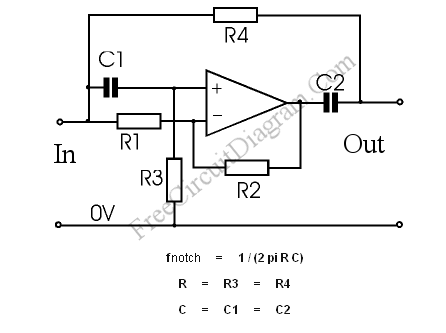Do-it-yourself EEG, EKG, and EMG
Source: https://sites.google.com/site/chipstein/homeThis site features things related to my interests, including neurophysiology and transcranial magnetic stimulation (TMS). The EMG, EKG, and EEG sections describe several simple methods that teachers and hobbyists can use to record these signals safely and easily on a laptop.
Although I have also published instructions on how to build a small transcranial magnetic stimulator, you will not find them here. Because the voltages and currents used for TMS are extremely high, and might kill you.
The videos include demonstrations of interference with speech and singing by TMS.
When I get the chance, I am happy to answer e-mails at chipstein@gmail.com .
I do neurophysiology for a living, and am sometimes asked if there is an easy way to record signals from human brains, hearts, and muscles for teaching, demonstrations, or just plain fun. Preferably not requiring too much in the way of money, parts, or programming. A number of other web sites describe homebrew EEG methods. Some of these, such as those described in Open EEG http://openeeg.sourceforge.net/doc/ , appear capable of near-professional results; but they often tend to be unnecessarily complex or misleading. Actual examples of recordings that look like EEG are infrequent. Collected here are several custom techniques of varying cost and complexity-- from the ridiculously cheap and simple to the moderately complicated. All use laptop computers, because laptops running on batteries are relatively immune from 60-Hz electrical noise and should be completely immune from any risk of electrical shock. The circuits are based on the AD 620 instrumentation amplifier, which costs about $6.00. In most of these applications the AD 620 allows recording with basically a single electronic part. (It's possible to do almost as well by building your own instrumentation amplifier, using more parts and with the potential to waste a lot more time troubleshooting. Most people will find it's worth a couple of extra bucks to buy this section as one chip.)
For the sake of beginners, the circuit instructions are pretty detailed; anybody with electronics experience can probably skip them. Results are viewed with different add-ons and cheap or freeware programs depending on the platform, the application, and my whims at the time. The programs include Zelscope, Visual Analyser for PCs, Chipmunk BASIC for Macs, MacScope II, Audacity, and Processing. If you are using a PC, Zelscope is my favorite for these applications, despite the $10 you have to pay for it after the demo period; it works with both the mike input jack and the Behringer U-Control, and it can display up to 5-10 seconds of data for EEG or EKG.
For the record, it seems to me almost impossible that anybody could injure themselves, and very difficult to damage your computer, by following these instructions; but human ingenuity knows no bounds. So you use the following circuits, software, equipment, and procedures entirely at your own risk. I take no responsibility for anything that might happen to you, your computer, or anything else belonging to you.
A KEY CONCEPT: the most important component of neurophysiological recording, especially for tiny signals like EEG, is not the hardware or the software, but the quality of the electrical connections to the body and head. The section on Electrodes and Electrolytes is therefore crucial.
EMG (electromyography) and EKG (electrocardiography) are fairly simple to record, since they are relatively big signals (a millivolt or more), and occur largely in audio frequencies that overlap with music and speech. EEG is more difficult, because the signal is about 20 times smaller and activity extends down to 1 Hz or below. In the special case of a Mac Powerbook or MacBook, the audio line input goes down to 5 Hz. Other than Macs, most laptops appear to have only a microphone jack, which is poorly-suited for other kinds of signals.# A possible alternative, and an mild improvement on the Macintosh line input for EEG, is the $30 Behringer U-Control, with a bandwidth extending down to 4 Hz. However, the signal is smaller and the software options that will capture the U-Control signal are limited. An Arduino will do best of all for EEG, but requires a more complicated amplifier circuit.
Even if you are interested only in EEG, you should try out the amplifier with EMG or EKG first, because this will verify that things are working properly with larger signals that are recorded from a more accessible part of the anatomy.
Possible configurations for recording include:
AD 620 amplifier with Powerbook or MacBook: connect through the audio input for EKG, EMG, and the alpha-beta portion of the EEG.
AD 620 amplifier with PC: connect through the microphone input for EMG with VA.
AD 620 amplifier with Mac or PC laptop and Behringer U-Control UCA202: EMG with VA or MacScope II; EKG and alpha-beta EEG with MacScope II.
More complex AD 620 amplifier with Arduino: Best EEG.
____________________________________
# In both my PC laptops, the mike input rolls off below about 40 Hz (making it optimal only for EMG recording) and seems to have some sort of AGC that can't be disabled. However, a similar, relatively simple circuit using the PC mike input has been posted for EKG, along with a nice Visual Basic display, at http://hoffman.blogs.com/tales/2004/06/homebrew_ecg.html . The illustration shows good P and QRS waves, but the T-wave is completely absent due to the poor low-frequency response of the mike input.
Building the Amplifier
EEG With an Arduino
|

















Hiç yorum yok:
Yorum Gönder